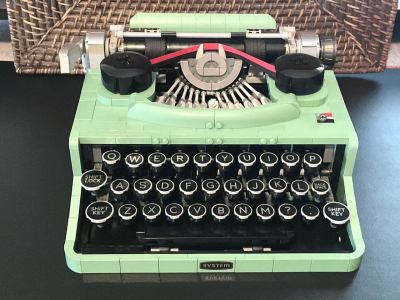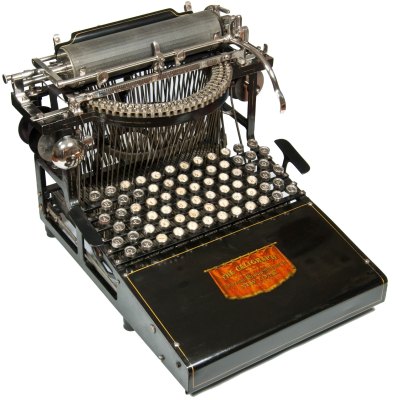It seems like mechanical keyboard enthusiasts are more spoiled for choice with each passing day. But as broad as the open source pool has become, there’s still no perfect keyboard for everyone. So, as people innovate toward their own personal endgame peripherals and make them open source, the pool just grows and grows.

Come for the lovely wooden everything, and stay for the in-depth logs as [Bo Yao] introduces the project and its roots, reviews various options for the controller, discusses the manufacture of the wooden parts, and creates the schematic for the 61-key version. Don’t want to build one yourself? It’ll be on Crowd Supply soon enough.
LEGO Typewriter Build Brings Peace, One Piece at a Time
Actual peer pressure is one thing, but the fear of future peer pressure — now that’s a motivator. When Renée Graham, typewriter aficionado, received a LEGO typewriter kit as a birthday gift at brunch a few weeks ago, she knew she had to overcome her general fear of putting things together and at least try to build it, lest she have nothing to report back to those brunch buddies.

After a few hours of building, Renée was sure she’d found a new calling in engineering and would finish it in no time, but she hit a major roadblock, got discouraged, and threw the thing into a closet. Let’s just say I can relate right down to the closet on another build, and hope to start (and finish) this typewriter myself one day.
But alas, Renée “refused to be defeated by a birthday gift”, and got back on the proverbial horse by completely starting over. During the build process, which was often performed in silence, Renée uncovered a patience she didn’t know she possessed by being forced to slow down and do things one at a time.
And it ultimately brought her peace. Except for that one piece that went missing, which we hope is safely underneath the entertainment center or something and not buried in the rug, waiting to strike as Renée suggests.
The Centerfold: LEGO My Keyboard

Some of [theglimy]’s kit bricks came warped, so they ended up building 90% of the keyboard out of random LEGO. But rather than throw out the warped bricks, they made a wrist rest out of them. ABS lemonade!
Do you rock a sweet set of peripherals on a screamin’ desk pad? Send me a picture along with your handle and all the gory details, and you could be featured here!
Historical Clackers: Caligraph 2

Many keyboard layer enthusiasts will tell you the fewer keys, the better, so they never have to move my fingers too far from the home row. Heck, build a pointing device into the thing for good measure.
In the early days of typewriters, the idea of the home row as a keyboarding guidepost had yet to be standardized, along with the idea of using a Shift key to double the duty of each one. As such, there were designs like the 1882 Caligraph 2 which was the first typewriter to use a double keyboard — separate keys for lower and upper case letters, and another set for numbers.
The perceived advantage was that a single keystroke was faster than using a combination of keys and a home row as with touch typing. When touch typing took off in the 1890s, support for this type of double keyboard dwindled rapidly, and the widely-imitated Underwood of 1896 with its four rows of keys really sealed the big double keyboard’s fate. Be sure to check out the brief video below from [Martin Howard] of Antique Typewriters showing the Caligraph 2 in operation.
ICYMI: Nyan Keys Is About As Fast As It Gets

Of course, you couldn’t tell just by looking that this keyboard boasts a screaming 30 μs latency compared with a rough average of 1 ms for your faster commercial keyboards on the market. But it does, thanks to the STM32F723VET6 MCU, which does USB 2.0 HS natively.
Since this keyboard uses an FPGA, each key switch can connect to its own I/O pin, eliminating the need for diodes. On top of that, each switch gets its own “core” in the form of an 8-bit timer that is always counting up to 255. The key can’t change its state unless the timer reads 255, so this acts as a debounce mechanism. Of course, to really unlock this keyboard’s potential, you have to enable the Bitcoin miner in the accompanying NyanOS.
Got a hot tip that has like, anything to do with keyboards? Help me out by sending in a link or two. Don’t want all the Hackaday scribes to see it? Feel free to email me directly.

















I was really hoping that lego typewriter was a functional typewriter. I guess I’ll have to settle for this printer made of lego blocks instead.
That would be pretty cool. Would need access to a decent supply of LEGO sheets of paper.
Thanks for the Nyan Keys shoutout!